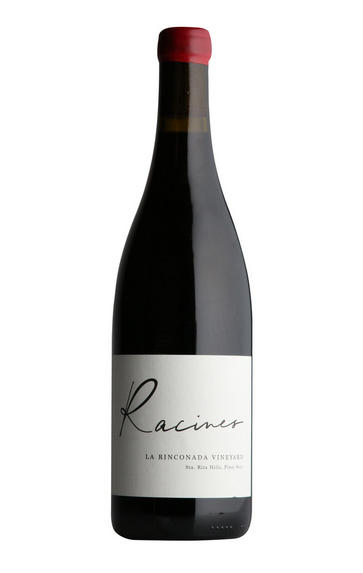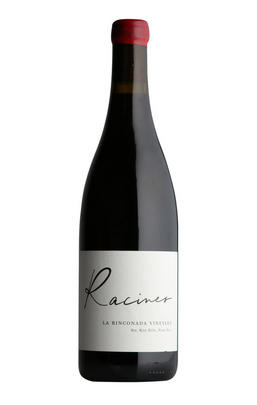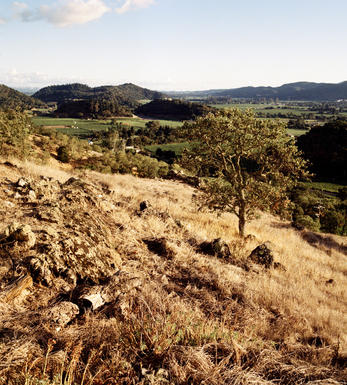
2018 Racines, La Rinconada, Pinot Noir, Santa Rita Hills, California, USA

Critics reviews
The 2018 Pinot Noir La Rinconada is a very pretty, airy wine. Crushed rose petal, mint, sage, cedar and dried herbs give the Racines Rinconada a good deal of aromatic lift. This is an especially translucent style. Whole clusters are evident but not overdone. I would cellar the 2018 for at least a year or two, as it is a bit edgy and not totally put together just yet.
Drink 2022 - 2030
Antonio Galloni, Vinous.com (August 2020)
This Sta. Rita Hills-focused label between Justin Willett and Étienne de Montille takes a 'low and slow' approach to the winemaking process, contrasting the relatively delicate, high-toned style of the Tyler wines. Pinot Noir at La Rinconada Vineyard tends to exude a burly and structured style, as is the case with the 2018 Racines bottling. Sourced from a plot just feet away from that which supplies Tyler, a savoury and soft nose introduces a weighty, wide and tannic showing that is built to last.
Drink 2022 - 2045
Matthew Luczy, Decanter.com (July 2020)
About this WINE

Racines Wines
Burgundian winemakers Étienne de Montille and Brian Sieve joined with Champagne’s Rodolphe Peters to form Racines, in California’s Santa Rita Hills.
Their aim was to locate a perfect terroir outside of France: one where they could utilise produce stellar Pinot Noirs and Chardonnays, outside the constrictions of their respective French regions.
The cool climate of the Santa Rita Hills provided the perfect terroir for this new venture, given the team’s multi-generational expertise in hand-crafting Chardonnays and Pinot Noirs of remarkable purity and elegance. While Santa Rita’s ocean-driven terroir shines through, these wines benefit hugely from being crafted with the technique and expertise of hundreds of years of Burgundian and Champagne winemaking.
Ultimate care is given to the Chardonnay and Pinot Noir grapes, in order to coax out unique qualities. Whole-cluster fermentation is combined with pigéage throughout the Pinot Noir fermentation, to add spice to a burlier, weighted character. Chardonnay grapes are grown several miles from the ocean in ancient marine sea beds, to give the wines they create a real sense of energy, transparency and precision.

Santa Barbara County
At the foot of the Central Coast, just north of Los Angeles, the Santa Barbara County reverberates with its Missionary past, although viticulture as we know didn't arrive here until the 1970s. Now there are 6,000 ha of world class Pinot Noir & Chardonnay.
While fog banks shape the season, together with a notable rainfall deficit between May & November, elevated terraces such as Bien Nacido in the Santa Maria Valley AVA faciliate premium fruit growing. Santa Ynez Valley AVA enjoys similar trait, though cooler still;
Recommended Producers:
Au Bon Climat's Sanford & Benedict Chardonnay from the region's Santa Rita hills is a prime example. Qupe are another excellent source

Pinot Noir
Pinot Noir is probably the most frustrating, and at times infuriating, wine grape in the world. However when it is successful, it can produce some of the most sublime wines known to man. This thin-skinned grape which grows in small, tight bunches performs well on well-drained, deepish limestone based subsoils as are found on Burgundy's Côte d'Or.
Pinot Noir is more susceptible than other varieties to over cropping - concentration and varietal character disappear rapidly if yields are excessive and yields as little as 25hl/ha are the norm for some climats of the Côte d`Or.
Because of the thinness of the skins, Pinot Noir wines are lighter in colour, body and tannins. However the best wines have grip, complexity and an intensity of fruit seldom found in wine from other grapes. Young Pinot Noir can smell almost sweet, redolent with freshly crushed raspberries, cherries and redcurrants. When mature, the best wines develop a sensuous, silky mouth feel with the fruit flavours deepening and gamey "sous-bois" nuances emerging.
The best examples are still found in Burgundy, although Pinot Noir`s key role in Champagne should not be forgotten. It is grown throughout the world with notable success in the Carneros and Russian River Valley districts of California, and the Martinborough and Central Otago regions of New Zealand.


Buying options
Add to wishlist
Description
This Sta. Rita Hills-focused label between Justin Willett and Étienne de Montille takes a 'low and slow' approach to the winemaking process, contrasting the relatively delicate, high-toned style of the Tyler wines. Pinot Noir at La Rinconada Vineyard tends to exude a burly and structured style, as is the case with the 2018 Racines bottling. Sourced from a plot just feet away from that which supplies Tyler, a savoury and soft nose introduces a weighty, wide and tannic showing that is built to last.
Drink 2022 - 2045
Matthew Luczy, Decanter.com (July 2020)
wine at a glance
Delivery and quality guarantee